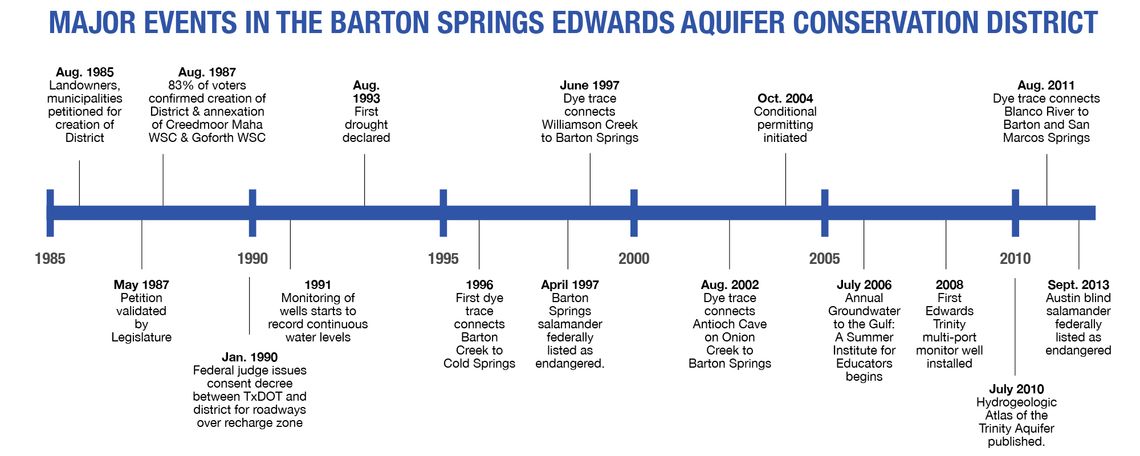[dropcap]I[/dropcap]t’s been 30 years since talks of regulation brought landowners from Hays County and the surrounding area together to request oversight of the community’s most precious resource – water.
Those efforts led to the formation of the Barton Springs Edwards Aquifer Conservation District (BSEACD), which is solely responsible for managing, conserving and protecting the Edwards Aquifer, which is the major supply of drinking water in the region, said John T. Dupnik, BSEACD general manager.
Groups like Save Our Springs and individuals such as Patrick Hawks led the effort to create the district, said Blayne Stansberry, BSEACD board president and precinct 2 director.
Prior to the district, the rule of capture determined how groundwater was managed, Dupnik said.
Under rule of capture, a landowner had a right to the water under their property, regardless of the effect their action may have on their neighbor.
See a timeline of action in BSEACD here.
It is the will of the people to allow them to be governed that allows for the district to exist, Dupnik said.
The formation of the district facilitated investment in “sound science,” Dupnik said.
Over the years, district staff has developed metrics to understand spring flows, how the aquifer recharges and how quickly it declines.
Recharge is how an aquifer refills itself through entrances in the earth where water flows down to the aquifer.
“That sort of information provides for a more sound basis for policy for the board to make decisions ... data driven decisions,” Dupnik said.
One of the key tasks of the district is to manage droughts, as well as issue the necessary voluntary or mandatory reduction of water usage by the public, Dupnik said.
The science-based research the board relies on to make policy is an asset to the community, Stansberry said.
With population growth in the area, Stansberry said managing the water source becomes ever more important.
Seventy-five percent of the water is the public water supply and the rest is used for commercial purposes, such as industrial and retail establishments.
Another critical stakeholder to the aquifer is endangered species such as the Barton Springs Salamander.
The salamanders live on the subsurface and rely on dissolved oxygen, which depends on spring flow rates.
The lower the spring flow, the lower the salamander population.
Conservation is crucial, but Dupnik said the district could turn to creative ways to supply water.
Water may be exported from more rural areas, Dupnik said.
Another solution is desalinization, which treats brackish, or salty, water and make it drinkable. One drawback to the desalinization is its expense, Dupnik said.
Stansberry said conservation is what can be done now to conserve water for the future.
Pressures from homeowner associations to maintain a green landscapes, and a perception of an abundance of water, are obstacles when it comes to conservation.
With ever growing demands on water from population growth, turning off the faucet when brushing your teeth and shaving is still important, because water is “the most fundamental for life on this planet,” Stansberry said.










